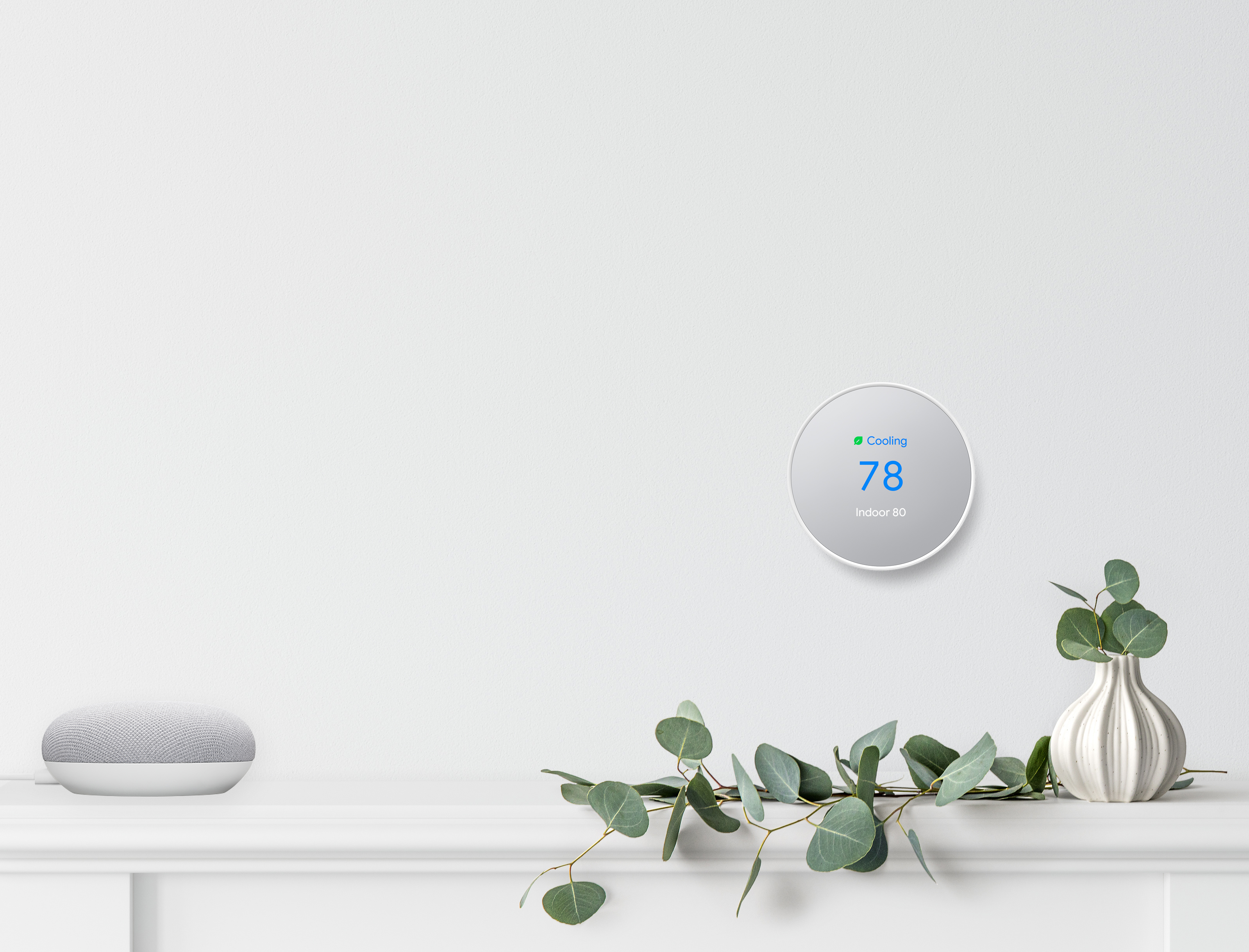Meet the helpful thermostat with a cozy price.
The Nest Thermostat can turn itself down to save energy when you leave the house. You can control it from anywhere with the Google Home app – whether you’re on an errand or on vacation. You can even change the temperature without getting off the couch or out of bed. Just say, “Hey Google, turn up the heat.” 1 The Nest Thermostat looks out for your heating or cooling system. If something doesn’t seem right, it can send an alert.
With proven energy savings, the Nest Thermostat can save also an average of 10-12% on heating bills and 15% on cooling bills.2


The Nest Thermostat is easy to install yourself, usually in 30 minutes or less.
Need more help? Visit the Nest support pages.
Features
Includes remote control capabilities from your phone, tablet or laptop.
Saves energy when you’re away. The Nest Thermostat can use sensors and your phone’s location to check if you’ve left home. Then it can set itself to an Eco temperature to save energy.
Finds ways to help you save. Savings Finder looks for more ways to save, and suggests tweaks to your schedule. You can accept the suggestions with a tap.
Checks your energy history. See how much you save and see how to save more.
Knows if there’s a problem. It can send you an alert. If you need to replace your air filter, you’ll get a reminder.
Fine-tunes your comfort. The Nest Thermostat comes with Quick Schedule. When you set up your new thermostat, you can easily customize your schedule.
Can set up family accounts
1-year limited warranty
Nest Thermostat’s perfect match.
The Nest Thermostat Trim Kit includes a trim plate designed to cover any imperfections on the wall from removing your old thermostat. It also includes a steel plate for installing the thermostat over an electrical box. And it comes in perfectly matched Nest Thermostat colors.
Shop Trim Kits
1. Independent studies showed that Nest thermostats saved people an average of 10% to 12% on heating and 15% on cooling. Individual savings are not guaranteed. Learn more 2. Alerts can notify you of a potential issue with an eligible HVAC system. They’re meant to provide helpful information, not an endorsement, representation, or warranty of any kind about the health of your HVAC system. Alerts aren’t intended to replace a diagnosis by a qualified HVAC professional.
Google and Nest Thermostat are trademarks of Google LLC.
ENERGY STAR® and the ENERGY STAR mark are registered trademarks owned by the U.S. Environmental Protection Agency.
 US Dollars
US Dollars



















